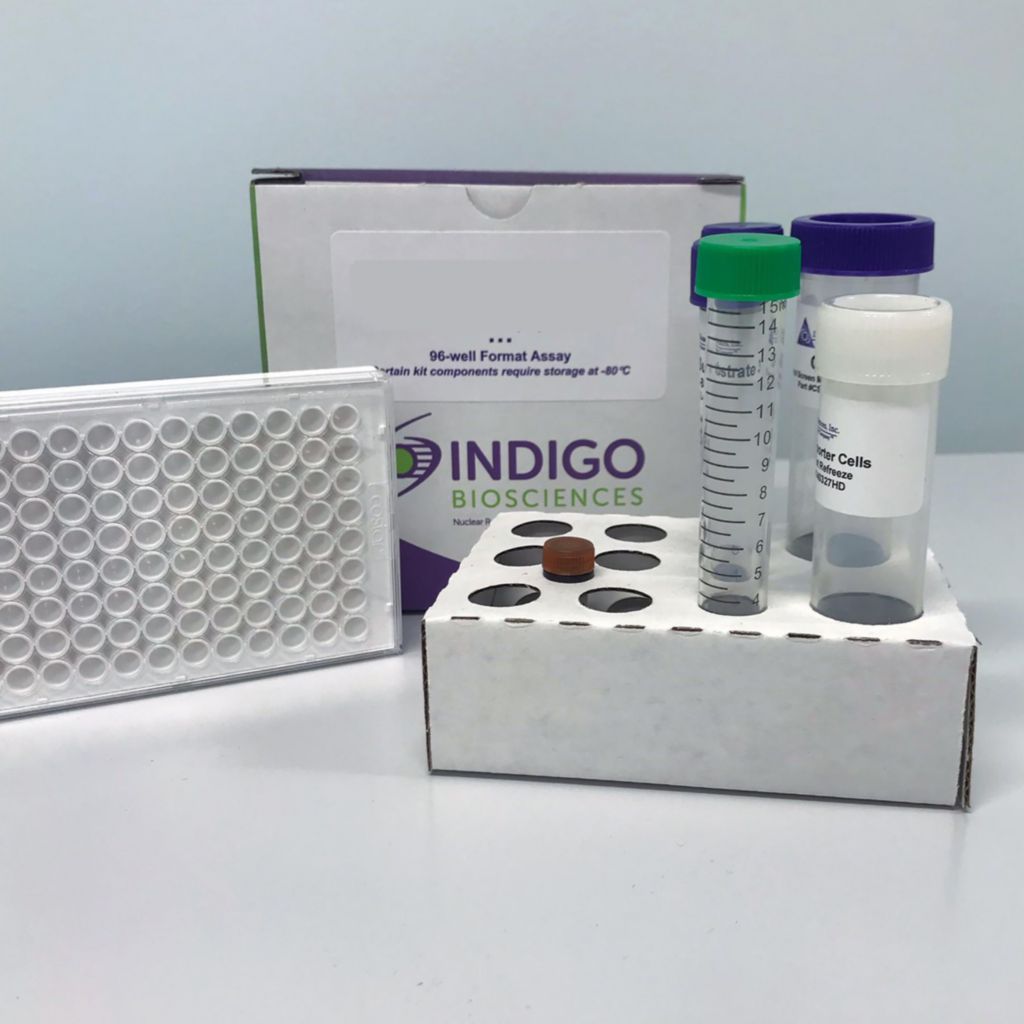Product Description and Product Data
This is an all-inclusive cell-based luciferase reporter assay kit targeting the Human Vitamin D Receptor (VDR). INDIGO’s VDR reporter assay utilizes proprietary mammalian cells that have been engineered to provide constitutive expression of the VDR. In addition to VDR Reporter Cells, this kit provides two optimized media for use during cell culture and in diluting the user’s test samples, a reference agonist, Luciferase Detection Reagent, and a cell culture-ready assay plate. The principal application of this assay is in the screening of test samples to quantify any functional activity, either agonist or antagonist, that they may exert against human VDR. This kit provides researchers with clear, reproducible results, exceptional cell viability post-thaw, and consistent results lot to lot. Kits must be stored at -80C. Do not store in liquid nitrogen. Note: reporter cells cannot be refrozen or maintained in extended culture.
Features
Clear, Reproducible Results
- All-Inclusive Assay Systems
- Exceptional Cell Viability Post-Thaw
- Consistent Results Lot to Lot
Product Specifications
| Target Type | Nuclear Hormone Receptor | ||
| Species | Human | ||
| Receptor Form | Hybrid | ||
| Assay Mode | Agonist, Antagonist | ||
| Kit Components |
| ||
| Shelf Life | 6 months | ||
| Orthologs Available | No | ||
| Shipping Requirements | Dry Ice | ||
| Storage temperature | -80C |
Data
Target Background
INDIGO’s Human Vitamin D Receptor Assay utilizes proprietary Human cells engineered to provide high-level expression of Human VDR (also known as NR1I1). Reporter Cells also incorporate a luciferase reporter gene. Quantifying expressed luciferase activity at the assay endpoint provides a sensitive surrogate measure of changes in VDR activity in treated cells. The principle application of this reporter assay system is in the screening of test samples to quantify functional activity, either agonist or antagonist, that may exert against the Human VDR.
The calcitriol receptor, also known as the vitamin D receptor (VDR) is a member of the nuclear receptor family of transcription factors. Upon activation by vitamin D, the VDR forms a heterodimer with the retinoid-X receptor and binds to hormone response elements on DNA resulting in expression or transrepression of specific gene products. Glucocorticoids are known to decrease expression of VDR which is expressed in most tissues of the body and regulate intestinal transport of calcium. This gene encodes the nuclear hormone receptor for vitamin D3. This receptor also functions as a receptor for the secondary bile acid lithocholic acid. The receptor belongs to the family of trans-acting transcriptional regulatory factors and shows similarity of sequence to the steroid and thyroid hormone receptors. Downstream targets of this nuclear hormone receptor are principally involved in mineral metabolism though the receptor regulates a variety of other metabolic pathways, such as those involved in the immune response and cancer. Mutations in this gene are associated with type II vitamin D-resistant rickets. A single nucleotide polymorphism in the initiation codon results in an alternate translation start site three codons downstream. Alternative splicing results in multiple transcript variants encoding the same protein.
Citations
Also available as a service

